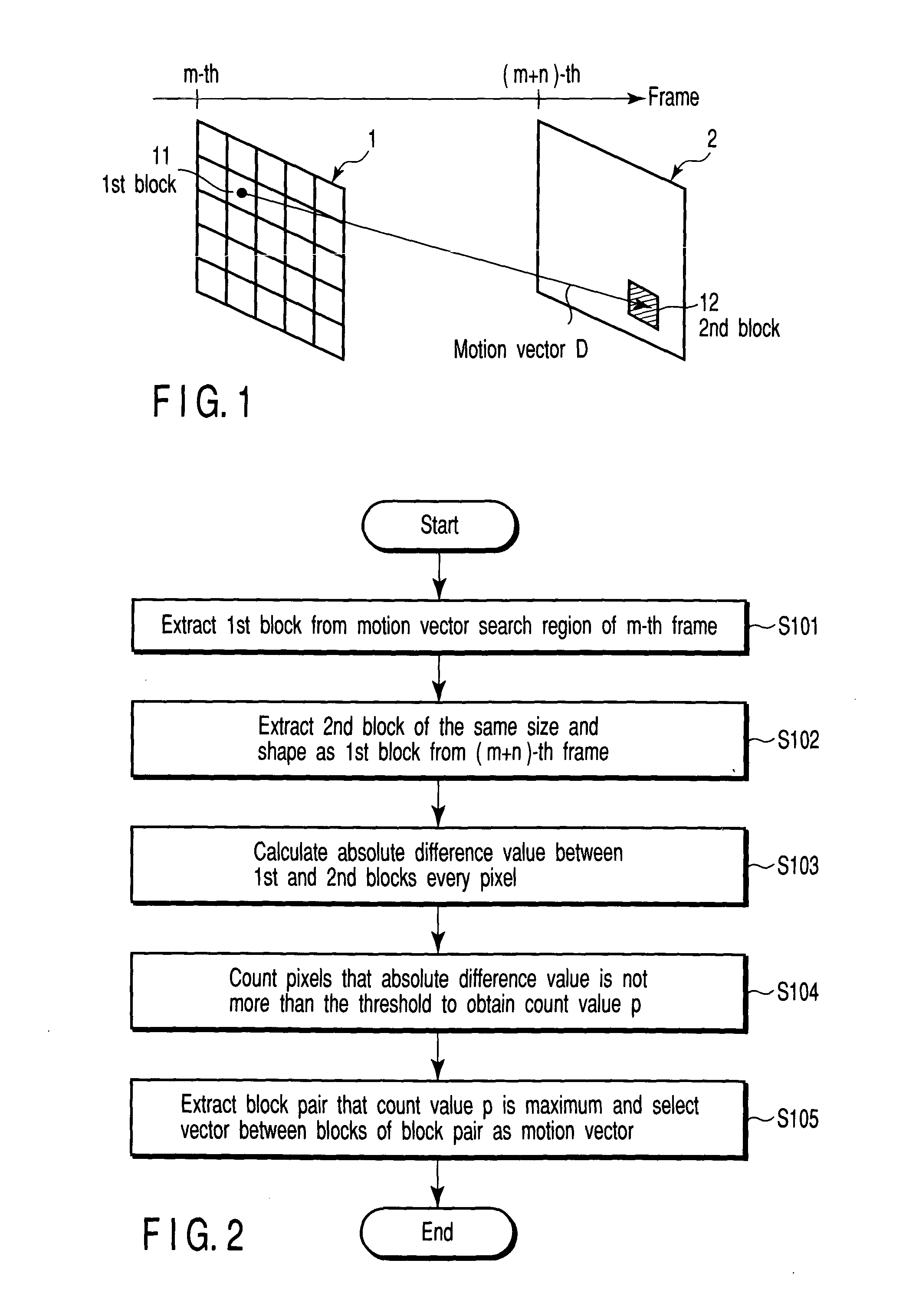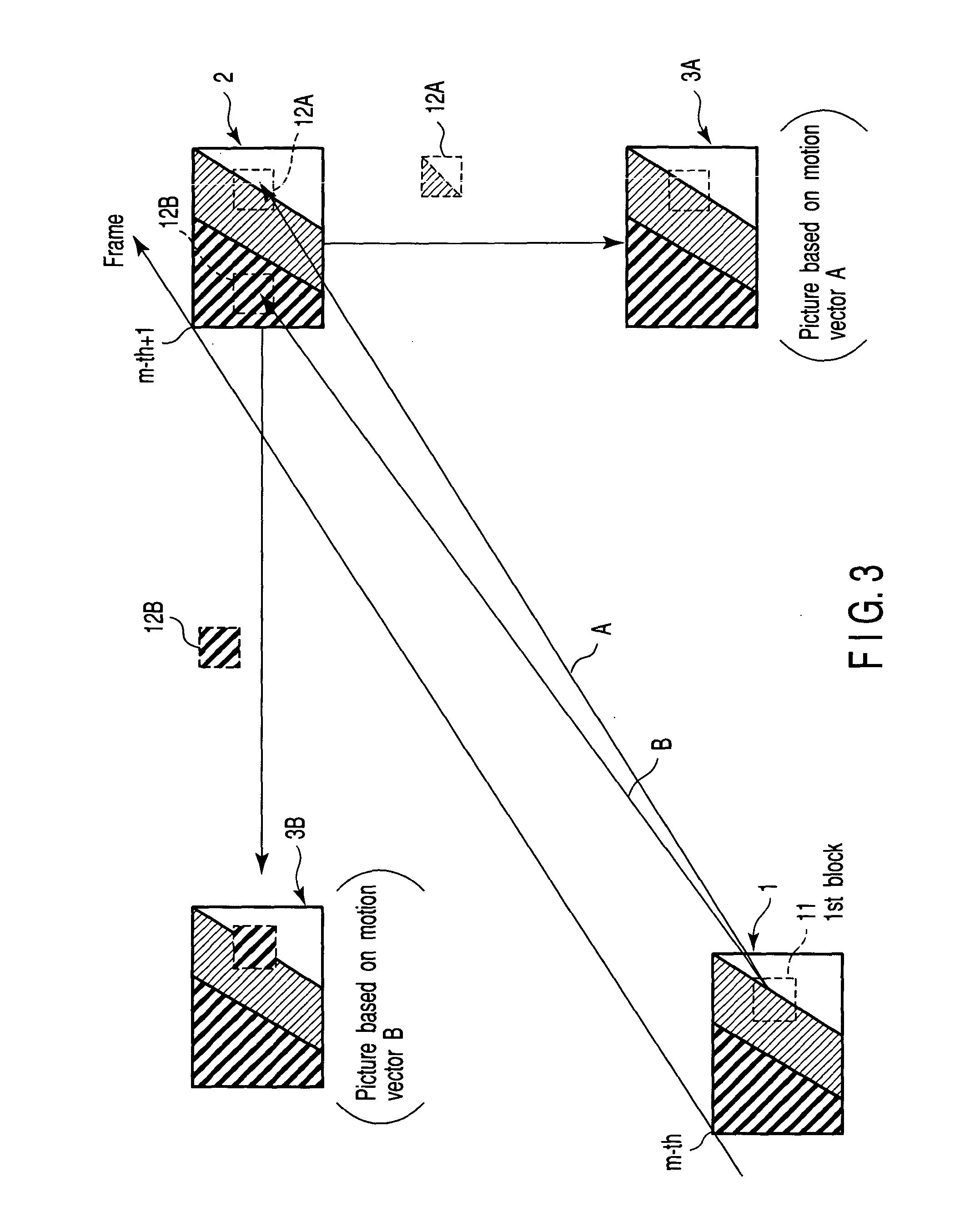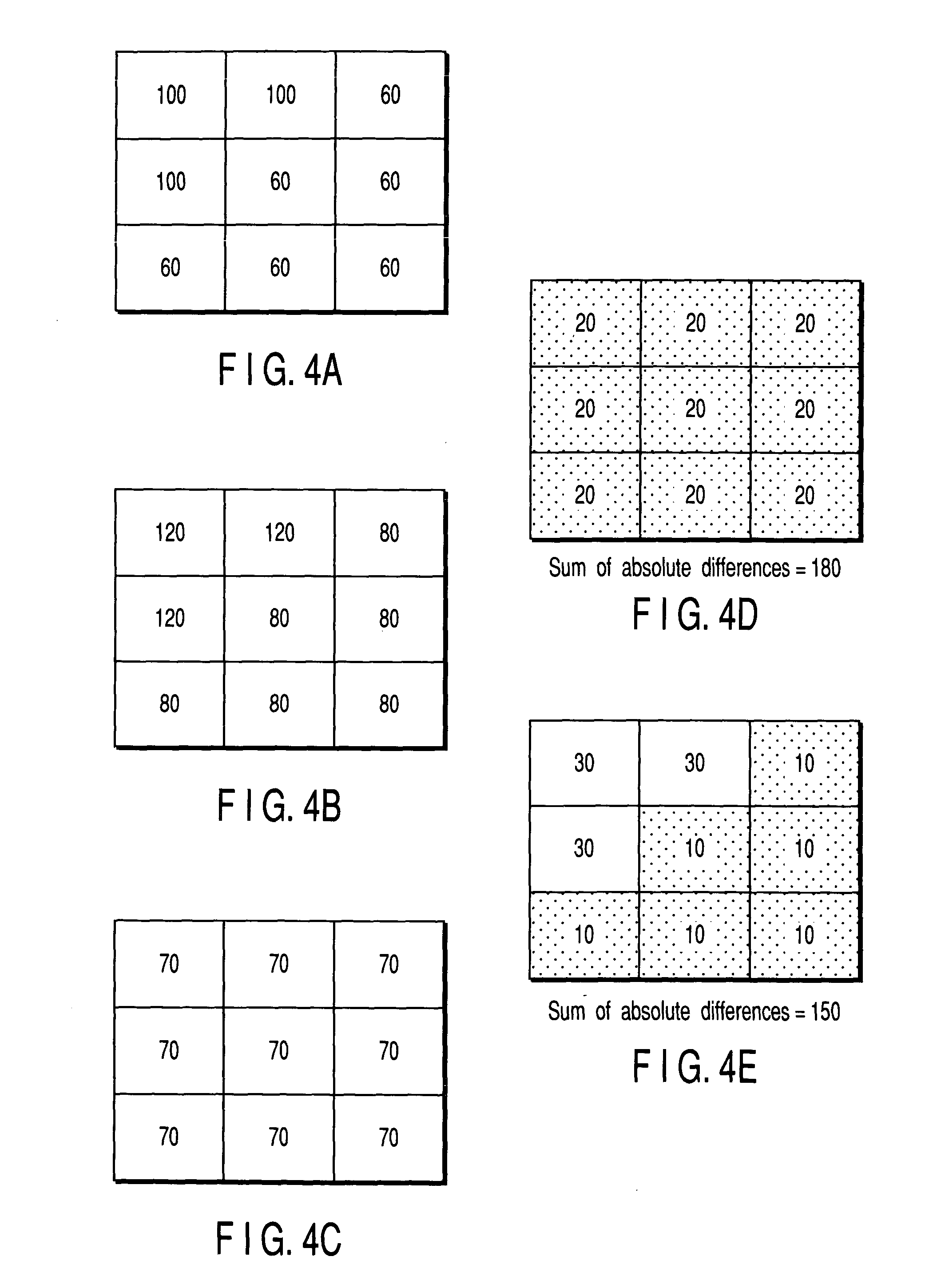Method of searching for motion vector, method of generating frame interpolation image and display system
a frame interpolation image and motion vector technology, applied in the field of searching for motion vector, can solve problems such as unnatural movement, correlated blocks and uncorrelated blocks, and blur phenomena
- Summary
- Abstract
- Description
- Claims
- Application Information
AI Technical Summary
Benefits of technology
Problems solved by technology
Method used
Image
Examples
first embodiment
[0043] A procedure shown in FIG. 2 is used in the first embodiment of the present invention to detect a motion vector between the m-th frame (m is integer) 1 and (m+n)-th frame (n is an integer not less than 1) 2 of an original video as shown in FIG. 1. The procedure of the present embodiment is described in conjunction with FIGS. 1 and 2 hereinafter.
[0044] At first, the image data of the m-th frame 1 is divided into a plurality of first blocks 11, and the first blocks 11 are extracted sequentially (step S101).
[0045] The second block 12 of the same size and shape as the first block 11 extracted in step S101 is extracted from the image data of the (m+n)-th frame 2 (step S102).
[0046] The absolute difference value of the corresponding pixels of the first block 11 extracted in step S101 and the second block 12 extracted in step S102 is computed every pixel (step S103). Therefore, the number of differential absolute values is equal to the number of pixels in a block.
[0047] Each absol...
second embodiment
[0061] As shown in FIG. 7, a motion vector from the m-th frame of an original picture (m is an integer) to the (m+n)-th frame (n is an integer not less than 1) is detected, and also a motion vector from the (m+n)-th frame to the m-th frame is detected. In the second embodiment of the present invention, such bidirectional motion vectors are detected according to a procedure shown in FIG. 8. The procedure of the present embodiment is described in conjunction with FIGS. 7 and 8 hereinafter. In FIG. 8, the process of steps S201 to S205 is similar to that of steps S101 to S105 of FIG. 2.
[0062] In other words, at first the image data of the m-th frame 1 is divided into a plurality of first blocks 11 to be extracted sequentially (step S101).
[0063] The second block 12 of the same size and shape as the first block 11 extracted in step S201 is extracted from the image data of the (m+n)-th frame 2 (step S202).
[0064] The first absolute difference values of opposite pixels of the first block ...
third embodiment
[0082] As shown in FIG. 10, in order to detect a motion vector F between the m-th frame (m is an integer) 1 of an original picture and the (m+n)-th frame (n is an integer not less than k+1, k is a real number) thereof, the (m+k)-th (k is a real number) frame 4 is supposed to be between the m-th frame 1 and the (m+n)-th frame 2. Assuming that third and fourth motion vectors extend to the m-th frame 1 and (m+n)-th frame 2, respectively, from the (m+k)-th frame 4.
[0083] The (m+k)-th frame 4 is an imagination frame which is supposed to be halfway between the m-th frame 1 and the (m+n)-th frame 2 as described above and does not exist in the original picture. It is a bunch of image data capable of newly forming based on the original picture. The process procedure of the present embodiment is described in conjunction with FIGS. 10 and 11 hereinafter.
[0084] At first, the image data of the (m+k)-th frame 4 is divided into a plurality of fifth blocks 15 to be extracted (step S301).
[0085] T...
PUM
 Login to View More
Login to View More Abstract
Description
Claims
Application Information
 Login to View More
Login to View More - R&D
- Intellectual Property
- Life Sciences
- Materials
- Tech Scout
- Unparalleled Data Quality
- Higher Quality Content
- 60% Fewer Hallucinations
Browse by: Latest US Patents, China's latest patents, Technical Efficacy Thesaurus, Application Domain, Technology Topic, Popular Technical Reports.
© 2025 PatSnap. All rights reserved.Legal|Privacy policy|Modern Slavery Act Transparency Statement|Sitemap|About US| Contact US: help@patsnap.com



